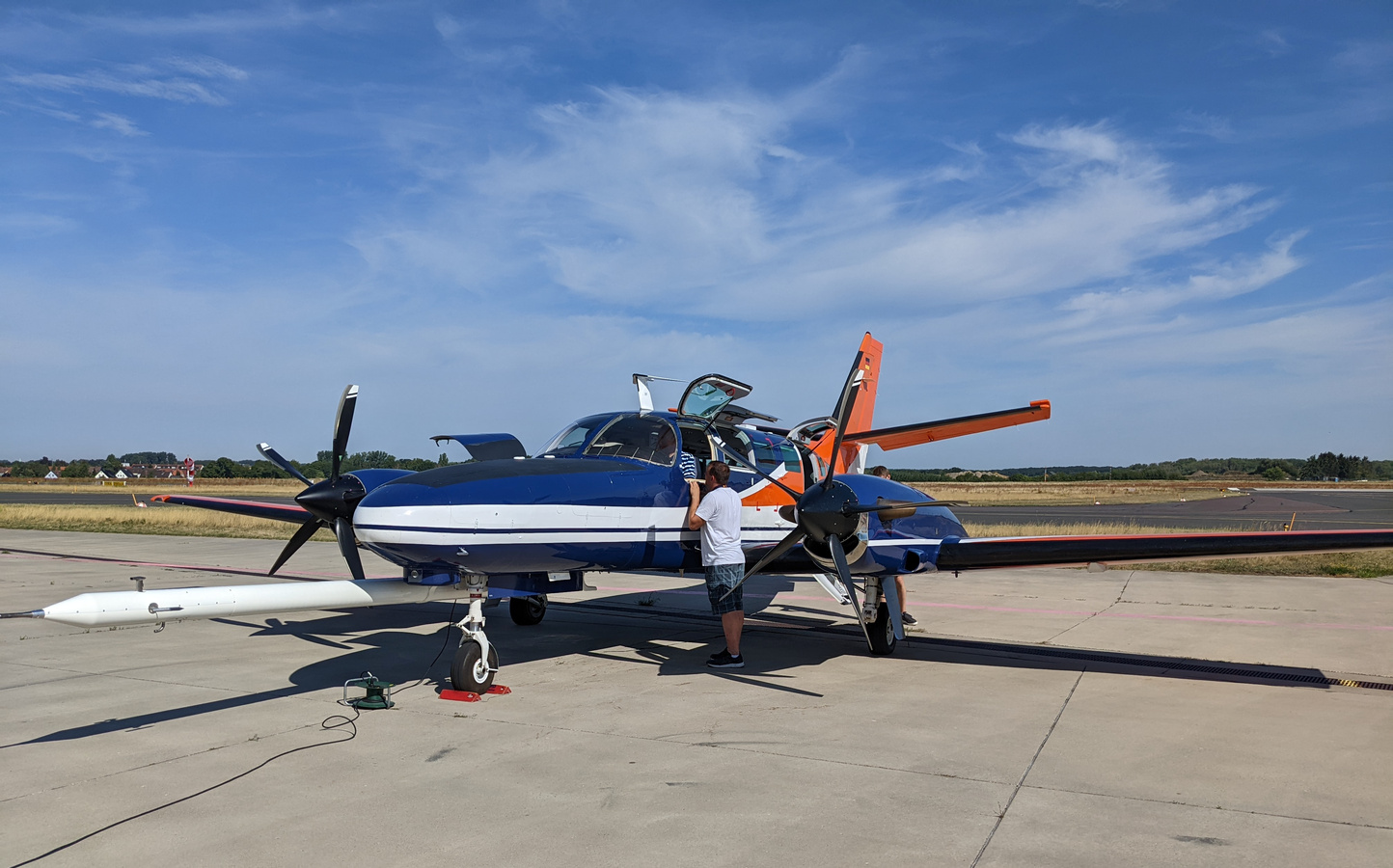Mode S weather
deriving meteorological information out of aircraft transponder data
A new data source for aviation & meteorology
Thousands of aircraft are travelling above our heads every day, measuring important information about the athmospheric conditions for the flight crew to ensure a safe flight. Huge datasets are being created, but not used in a way they could be. Skysquitter is using raw Mode S messages of the aircraft to calculate Wind, Temperature, barometric Pressure and Turbulence indication – in realtime and without the need of any cooperation or additional hardware on board. This makes Mode S an independent and new data source for weather information, where no other live data source is available yet.

Data Sources
In order to calculate filtered and corrected weather information, data quality is very important. Skysquitter therefore relies on an own closed, non-crowdsourced network with own professional hardware to receive aircraft data. Learn more about the Skysquitter Surveillance Network here. Since Mode S is an international standard, there is no need for additional on board equipment – making Skysquitter’s solution independent and affordable.
The system is already fully operational, covering most of europe. Whole european coverage will be established in late 2022. In order to integrate into existing setups, Skysquitter ist able to provide data in various formats and streaming- or database options.

Applications
Mode S derived weather information is a new and powerful data source which provides realtime information, where the are no other available live data sources. It can be used for a variety of applications, including:
Weather Services
• Enriching weather models
• Optimizing weather forecasting
• Validation of weather models
• Building new products
Air Navigation Service Provider
• Enabling time based seperation
• Increasing airspace and airport capacity
• Reduction of expensive delay & emissions
Airlines & Aircraft operators
• Optimized routing planning
• More efficient fuel calculation
• Increased safety
• Avoidance of adverse athmospheric conditions

Arriving and departing traffic at Airport Berlin Brandenburg (EDDB)
Filtering & correction
Using Mode S as data source is a big challenge. Different aircraft, different avionics, faulty transponders and biases by design are to be addressed. After years of research and actual flight tests, Skysquitter developed own algorithms for bias correction, filtering and blacklisting to keep the calculation as precise as possible. In July 2022, flight experiments with a dedicated research aircraft were carried out to improve wind calculations on approach & short final.


Get in touch: info (at) skysquitter.com